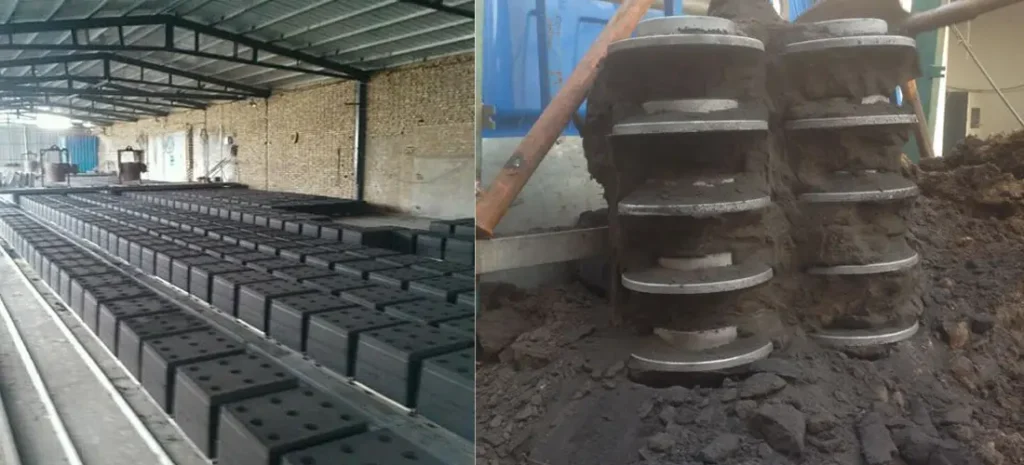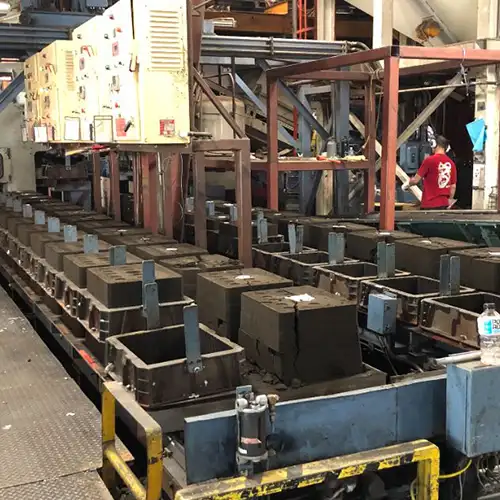
The green sand process is a process method widely used in casting production. It refers to the use of a combination of sand, water and additives to make wet sand molds and pour liquid metal to form the final product in casting production. This sand mold (core) does not need to be dried and can be poured directly.
The commonly used order of adding materials is to first mix the recycled sand with new sand, bentonite, coal powder and other dry materials, and then add water to mix to the required performance indicators. When mixing sand, the amount of various raw materials added should be strictly controlled to ensure the quality of the molding sand.
The green sand process is widely used in the production of castings in various industries, and is mainly suitable for the following types of castings:
1. Small and medium-sized castings: The green sand process is particularly suitable for the production of small and medium-sized castings due to its process characteristics. This type of casting is usually moderate in weight and size, so that the green sand process can effectively control the strength and permeability of the sand mold and ensure the quality of the casting.
2. Gray iron castings: The green sand process is widely used in the production of gray iron castings. Gray cast iron has good casting performance and mechanical properties. The green sand process can meet the requirements of gray cast iron parts for sand mold strength and filling performance, ensuring the quality and production efficiency of castings.
3. Castings with simple shapes: For castings with simple shapes and regular structures, the green sand process can more easily realize the preparation and pouring of sand molds. Such castings usually do not require complex sand cores and core structures, making the green sand process simpler and more efficient in the production process.
4. Castings with low surface quality requirements: Although the green sand process may cause some defects on the surface of the castings, these defects are acceptable for some castings with low surface quality requirements.
Advantages of green sand process
1. Low production cost
Raw materials are easily available and inexpensive. Old sand can be recycled and reused in large quantities.
2. High production efficiency: Green sand casting has a short production cycle and fast production speed, which can greatly improve production efficiency and output, and is suitable for mass production.
3. Environmental protection: Green sand is mainly composed of raw materials such as bentonite, quartz sand, bentonite, coal powder and water. It is non-toxic, odorless and will not cause serious pollution and harm to the environment.
4. High modeling accuracy: Green sand has good fluidity and can fill the complex shapes in the mold. It can manufacture parts with relatively complex geometric shapes and internal structures.
Disadvantages of green sand process
1. Poor surface quality of castings:
Because the molding sand has not been preheated or dried, the moisture and gas in the sand mold are easy to form pores and sand holes during the pouring process, affecting the surface quality of the casting. Defects such as sand inclusion and sticking may appear on the surface of the casting, which increases the difficulty of subsequent cleaning and processing.
2. Relatively poor process stability:
The green sand process has high requirements for the strength and permeability of the sand mold, but because the moisture and binder content in the sand mold are not easy to accurately control, it may cause large fluctuations in the strength and permeability of the sand mold. Excessive moisture will cause gas generation and a decrease in the strength of the sand mold, while too little moisture may affect the permeability and filling performance of the sand mold, thereby affecting the quality stability of the casting.
3. Not suitable for large and complex parts:
When casting large and complex parts, the green sand process may cause defects such as cracks and deformation in the casting process due to the limitations of the sand mold size and structure.
For sand molds that require the placement of chillers, the green sand process is not suitable, because the chiller will accelerate the cooling rate of the sand mold and increase the risk of cracks in the casting.
Our experienced team is always ready to assist you in evaluating your casting requirements and determining the casting solution that best suits your needs.





